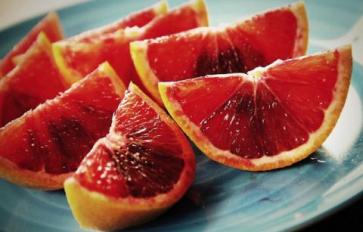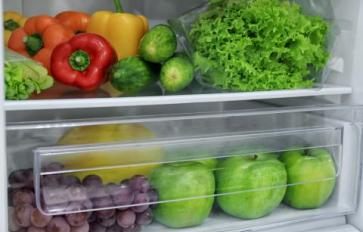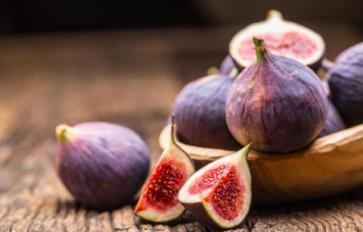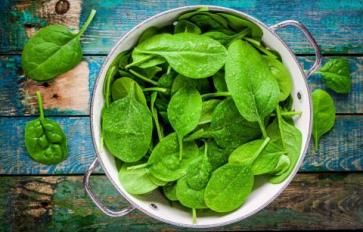
Have you heard of the Environmental Working Group's (EWG) Dirty Dozen list? Every year, this non-profit organization shifts through the fruit and vegetable market to see which conventionally-grown produce is loaded with the most pesticides. The Dirty Dozen list for 2018 is officially here and let’s just say the report found nearly 70 percent of produce tested was contaminated with pesticide residue. Here's what you need to know.
How to Read the Dirty Dozen List & Why It Matter?
Many people don't even realize conventionally-grown produce has pesticide residue on it. This residue typically stays on even after being washed and peeled, too. Tests done by the United States Department of Agriculture (USDA) were analyzed by the EWG recently: In conclusion, the tests found a total of 230 different pesticides and pesticide breakdown products on the thousands of produce samples analyzed. Pretty scary, right? To make this easier for people to comprehend, EWG converted their analysis into two lists: The Dirty Dozen and The Clean Fifteen.
The Dirty Dozen highlights the fruits and vegetables with the most pesticide residues while the Clean Fifteen highlights which produce items have the least (if any) pesticide residues. Typically, fruits and vegetables with thicker skins (like avocados) fair better than those without (like tomatoes). To read each list, it's important to understand the produce items are listed with order of importance in mind: For the Dirty Dozen list, the first produce item is the one with the most pesticides. It's not a good thing to be first on this list, that's for sure. The last item on the list is the item with the least pesticides, but some residue still remains, so it's not completely safe. These are the foods you should always go out of your way to buy organic.
For the Clean Fifteen, the first produce item listed is the one with the least pesticide residue. It's once again good to be on top in this list, and the lower you go down the list, the more likely you are to find pesticide residue (though it's minimal compared to the Dirty Dozen list). These are the foods you can get away with buying conventionally. However, if you want to avoid genetically modified organisms, you should always go for organic produce.
The reason pesticides are such a big deal on food is because consuming them can lead to various health problems. Believe it or not, a recent study in JAMA Internal Medicine found an association between consuming high-pesticide residue foods and fertility problems. Women who reported eating two or more servings per day of produce with higher pesticide residues were 26 percent less likely to have a successful pregnancy during the study than those who ate fewer servings of these foods. The same could be said about males too: A previous study of male participants found similar associations between reproductive health and the consumption of high residue produce. In other words, if you're trying to conceive, going organic is probably your best bet. Even if you're not trying for baby, it's alarming to think pesticide-laden produce can have that much of an effect on the human body (so why would you even want to eat it in the first place?).
Now, without further ado, here's the 2018 dirty dozen list (and why each produce item was ranked accordingly).
The 2018 Dirty Dozen
This information was obtained through EWG's Dirty Dozen list.
- Strawberries—This is the most pesticide ridden produce item on this list. According to EWG, one strawberry sample contained an astounding 22 pesticide residues. Adding insult to injury, one-third of all conventional strawberry samples contained 10 or more pesticides. Play it safe and opt for organic strawberries grown locally to you (or grow your own).
- Spinach—According to EWG, 97 percent of conventional spinach samples contained pesticide residue. Believe it or not, conventional spinach had relatively high concentrations of permethrin, a neurotoxic insecticide. Is that what you want to eat alongside your meal? Opt for organic spinach (even better if you can find it package-free at a farmers market).
- Nectarines—Did you know nearly 94 percent of nectarine samples contained two or more pesticides? One sample of conventionally grown nectarines contained residues of 15 pesticides. See if you can find someone who grows nectarines locally or get some at the farmers market instead.
- Apples—Believe it or not, at one point apples were at the top of the dirty dozen list. Now they rank fourth place (which is better, but still worrisome). According to EWG, 90 percent of conventional apples had detectable pesticide residues. If that's not bad enough, 80 percent of apples tested contained diphenylamine, a pesticide banned in Europe. Yuck. Stick to organic, locally grown apples instead.
- Grapes—As yummy as grapes are, they're not exactly the cleanest. Grapes contain an average of five pesticide residues. Ick. More than 96 percent of conventional grapes test positive for pesticide residues. Purchase grapes organically, or just wait until they come into season at your local farmers market in autumn. They'll be at their freshest then.
- Peaches—Nothing beats taking a bite out of a juicy summer peach. But unless you're eating organic, or locally grown, chances are you're eating pesticides too. More than 99 percent of conventional peaches had detectable pesticide residues. An average of four pesticide residues were detected on conventional peaches. Try picking your own peaches in the summer at an organic farm and freezing some for the colder months.
- Cherries—These sweet, anti-inflammatory fruits come into season every summer and taste amazing fresh off the farm. However, an average of five pesticides were detected on conventional cherries. 30 percent of cherry samples contained iprodione, a pesticide not allowed in Europe, which may cause cancer. Buy cherries from your local farmers market and save the seeds—you can try your hand at growing your own cherry tree.
- Pears—Enjoy eating pears? Consider finding some organically-grown pears instead. Pears contained several pesticides in relatively high concentrations, including insecticides and fungicides. More than half of conventionally grown pears tested had residues of five or more pesticides.
- Tomatoes—Tomatoes are used in so many different dishes—unfortunately, this means you're probably being exposed to a lot of pesticides over the course of a year. Nearly four pesticides were detected on the average conventionally grown tomato. One sample of conventional tomatoes contained 15 different pesticides and breakdown products. Buy organic tomatoes instead and make your own tomato dishes at home.
- Celery—Celery is typically marketed as a healthy snack for dipping into hummus. However, more than 95 percent of conventional celery samples tested positive for pesticides. A maximum of 13 pesticides were detected on a sample of conventional celery. Gross—stick to organic celery whenever possible.
- Potatoes—Buying organic potatoes is certainly worth it. Conventional potatoes had more pesticide residues by weight than any other crop. One pesticide in particular, chlorpropham, makes up the bulk of pesticides detected on potatoes. No thanks.
- Sweet bell peppers—This is the last produce item on this list, which means it has the least amount of pesticide residue of the Dirty Dozen foods. However, the pesticides that were found on sweet bell peppers tend to be more toxic to human health, earning them a spot on this list. Almost 90 percent of conventional sweet bell pepper samples contained pesticide residues. Choose organic and locally grown when possible, or grow your own from organic seed.
If this list alarms you, then that means it's doing its job. If you don't buy any other fruits and vegetables organic, at least make sure these Dirty Dozen are. To see which produce items you can get away with buying conventionally, check out EWG's 2018 Clean Fifteen list.








